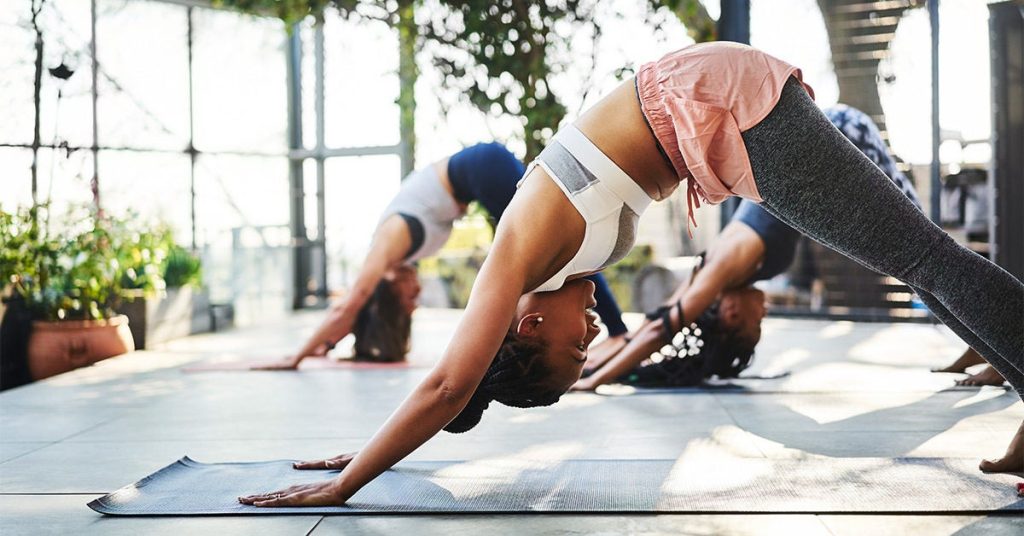
Embark on your yoga journey with “Yoga for Beginners: 5 Basic Poses for a Fit Body.” Yoga isn’t just about stretching—it’s a holistic practice that connects the mind, body, and spirit. Many beginners feel overwhelmed by the sheer variety of poses and aren’t sure where to start. This guide offers a clear and accessible introduction to fundamental yoga postures, equipping you with the knowledge and confidence to begin your yoga journey with ease. We’ll cover five crucial poses, explaining the proper alignment, benefits, and modifications for varied body types. Get ready to experience the transformative power of yoga for a fit and balanced life!
The Importance of Proper Form and Alignment in Yoga for Beginners
Understanding the Foundation of Yoga Poses
Proper form and alignment are essential in yoga for beginners. They not only prevent injuries but also maximize the benefits of each pose. Understanding the fundamental principles of alignment allows you to move with grace and precision. This creates space for your body to fully experience the stretch and expansion of each asana. Incorrect alignment can lead to muscle strain, pain, and reduced efficacy. A focus on proper form is key for building strength and flexibility in a safe and sustainable way. It’s crucial to remember that yoga is a personal journey; respect your body’s limits and modify poses as needed.
Mountain Pose (Tadasana): Finding Stability and Grounding
The Foundation of Standing Poses
Mountain Pose is the cornerstone of standing yoga poses. It grounds you and helps you develop body awareness. Standing tall, rooted to the earth, and centered within your body, you learn to experience the foundation of balance and stability. When you find your grounding from the soles of your feet up to your crown, you’re able to stabilize the entire body. This posture is often the first introduced in yoga classes because it prepares you for more advanced standing positions. By centering your body and finding your breath, you can achieve stability and confidence in your body and mind, which can improve your focus and concentration in subsequent poses.
Warrior II Pose (Virabhadrasana II): Building Strength and Stability
Exploring Balance and Power
Warrior II Pose challenges your balance and strength while opening up your hips and shoulders. It improves body awareness and flexibility. Imagine yourself a warrior poised to strike a powerful pose; this is your chance to embrace that warrior spirit. As you step into this pose, remember to find your balance and stability in both your feet and your breathing. This pose improves core strength, flexibility and balance. Studies show that yoga poses like Warrior II can contribute to improved balance, muscle strength, and overall body awareness.
Downward-Facing Dog Pose (Adho Mukha Svanasana): Stretching and Strengthening
The benefits of a Classic Yoga Pose
Downward-Facing Dog is a foundational posture for developing strength, flexibility, and balance. The pose stretches your hamstrings, calves, shoulders, and spine, invigorating your body from head to toe. Downward-facing dog is a great pose for beginners. It’s a fantastic stretch for the hamstrings and calves while strengthening your arms and shoulders. The pose also stimulates the nervous system, releasing tension and reducing stress. Maintaining correct form is vital for reaping the full benefits.
Child’s Pose (Balasana): Rest and Relaxation
Finding Peace and Stillness
Child’s Pose is a restorative posture that gently stretches the hips, thighs, and ankles. It calms the mind and promotes relaxation. By finding stillness through this pose, you’re allowing yourself to let go of the stresses and tensions of the day. The posture also helps to soothe the nervous system and encourage deep breathing. Allow yourself to surrender into this pose, letting your body and mind fully relax. A regular practice of child’s pose can aid in reducing anxiety and promoting a sense of calm.
How often should I practice yoga for beginners?
For beginners, aiming for two to three yoga sessions per week is a good starting point. Gradually boost the frequency as your comfort and stamina improve. Consistency is key in seeing outcomes, so find a schedule that works for you and stick with it!
Can I practice yoga for beginners at home?
Absolutely! There are numerous online resources, instructional videos, and beginner-friendly yoga programs available to guide you through the poses. Find resources that cater to your comfort level and learning style.
Are there any precautions or modifications needed for beginner yoga?
Always listen to your body and don’t push yourself beyond your limits. If you have any pre-existing injuries or health conditions, consult with your doctor or a qualified yoga instructor to discuss appropriate modifications.
Where can I find resources for beginner yoga?
Numerous online platforms and communities offer beginner-friendly yoga resources. Yoga studios, gyms, and community centers often offer classes specifically designed for beginners, providing personalized guidance.
Frequently Asked querys
What are the benefits of yoga for beginners?
Yoga for beginners can lead to boostd flexibility, strength, balance, and overall physical well-being. It also offers a pathway to mental clarity and stress reduction, fostering a sense of calm and inner peace. Consistent practice promotes mindfulness, cultivating a greater sense of self-awareness and body connection.
In conclusion, Yoga for Beginners offers a fantastic pathway to a healthier and more mindful lifestyle. By mastering these five fundamental poses, you lay a solid foundation for a journey of self-discovery and physical well-being. Remember to listen to your body, focus on your breath, and seek guidance from experienced instructors whenever needed. Ready to begin your yoga journey? Find a beginner-friendly yoga class near you today!